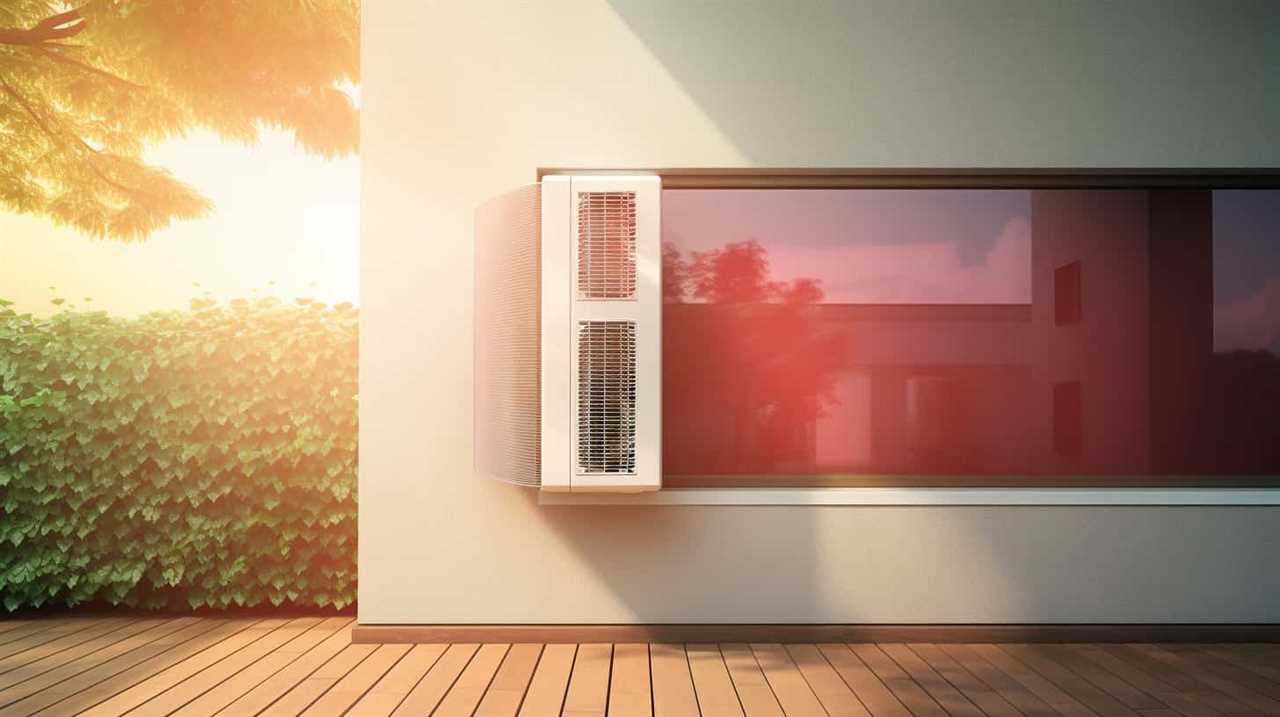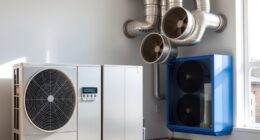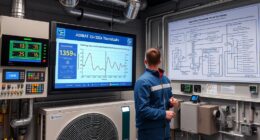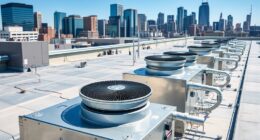Welcome to our in-depth analysis on evaluating heat pump upgrades to enhance energy efficiency and boost profitability.
In this analysis, we delve into the key indicators of energy efficiency metrics, evaluate the financial viability through cost analysis, estimate the long-term benefits of energy savings potential, assess the profitability of upgrades through return on investment (ROI), and provide real-life case studies for successful heat pump upgrades.
Join us as we uncover innovative solutions and strategies for optimizing energy efficiency in this exciting field.
Key Takeaways
- Clear standards serve as benchmarks to evaluate heat pump performance
- Adhering to energy efficiency standards ensures effectiveness in saving energy
- Estimating energy savings considers annual consumption and expected efficiency improvement
- Successful upgrades demonstrate the effectiveness of heat pump improvements
Energy Efficiency Metrics: Understanding the Key Indicators
Now that we understand the importance of energy efficiency in heat pump upgrades, let’s explore the key indicators that can help us assess and measure the effectiveness of these improvements.

When it comes to energy efficiency, it’s essential to have clear standards in place. These energy efficiency standards serve as a benchmark to evaluate the performance of heat pumps and determine their overall effectiveness in saving energy. By adhering to these standards, we can ensure that our heat pump upgrades are meeting the required efficiency levels.
Additionally, calculating payback is another important indicator for assessing the effectiveness of heat pump upgrades. It allows us to determine the time it will take for the energy savings generated by the upgrade to offset the initial investment.
Cost Analysis: Evaluating the Financial Viability of Heat Pump Upgrades
To evaluate the financial viability of heat pump upgrades, we’ll analyze the costs associated with the initial investment and the potential energy savings over time. Conducting a cost benefit analysis is crucial in determining whether the upgrade is a wise investment. Here are three key factors to consider when evaluating the financial viability of heat pump upgrades:
- Initial Investment:
- Calculate the cost of purchasing and installing the new heat pump system.
- Include any additional costs such as retrofitting or upgrading existing infrastructure.
- Consider any available incentives or rebates that can offset the initial investment.
- Energy Savings:
- Estimate the potential energy savings that the upgraded heat pump will provide over its lifespan.
- Consider the average annual energy consumption and the expected efficiency improvement.
- Payback Period Estimation:
- Determine the payback period by dividing the initial investment by the annual energy savings.
- Evaluate whether the payback period aligns with your financial goals and expectations.
Energy Savings Potential: Estimating the Long-Term Benefits
We will evaluate the long-term benefits of heat pump upgrades by estimating the potential energy savings over an extended period of time. By analyzing historical energy consumption data, we can project future savings based on the improved efficiency of upgraded heat pumps. These energy savings projections are crucial for determining the financial viability of such upgrades.
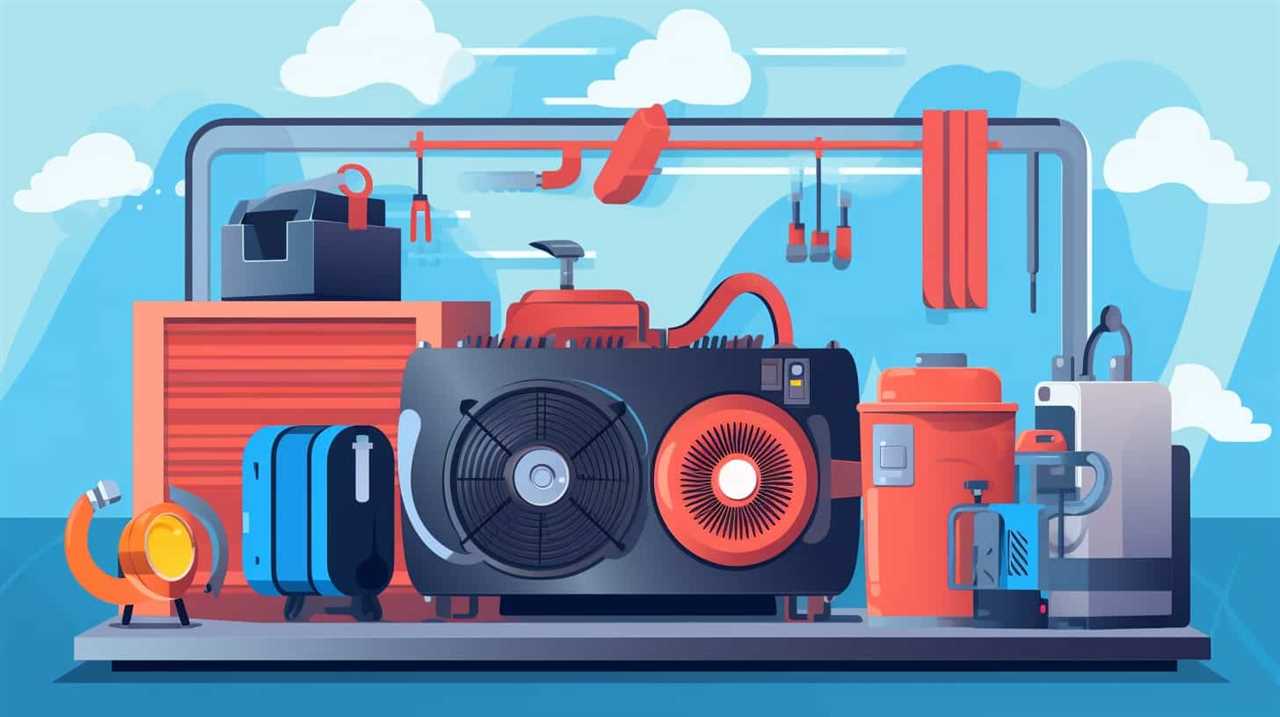
To estimate the long-term benefits, we’ll consider the payback period, which is the time it takes for the energy savings to cover the initial investment cost. By comparing the projected energy savings with the upfront costs of the heat pump upgrades, we can determine the payback period. This information is valuable for decision-making, as it helps in assessing the economic feasibility and profitability of investing in heat pump upgrades.
Accurate energy savings projections and payback period estimation are critical for individuals and organizations seeking innovative solutions to reduce energy consumption and lower costs in the long run.
Return on Investment (ROI): Assessing the Profitability of Upgrades
Our study will evaluate the profitability of heat pump upgrades by calculating the return on investment (ROI) based on the initial cost of the upgrades and the energy savings generated over a specified period of time.
To help you understand the importance and benefits of assessing the profitability of upgrades, consider the following:

-
Assessing energy consumption:
-
By analyzing the energy consumption before and after the heat pump upgrades, we can determine the effectiveness of the upgrades in reducing energy usage.
-
This assessment provides valuable insights into the potential cost savings and environmental benefits associated with the upgrades.
-
Evaluating payback period:
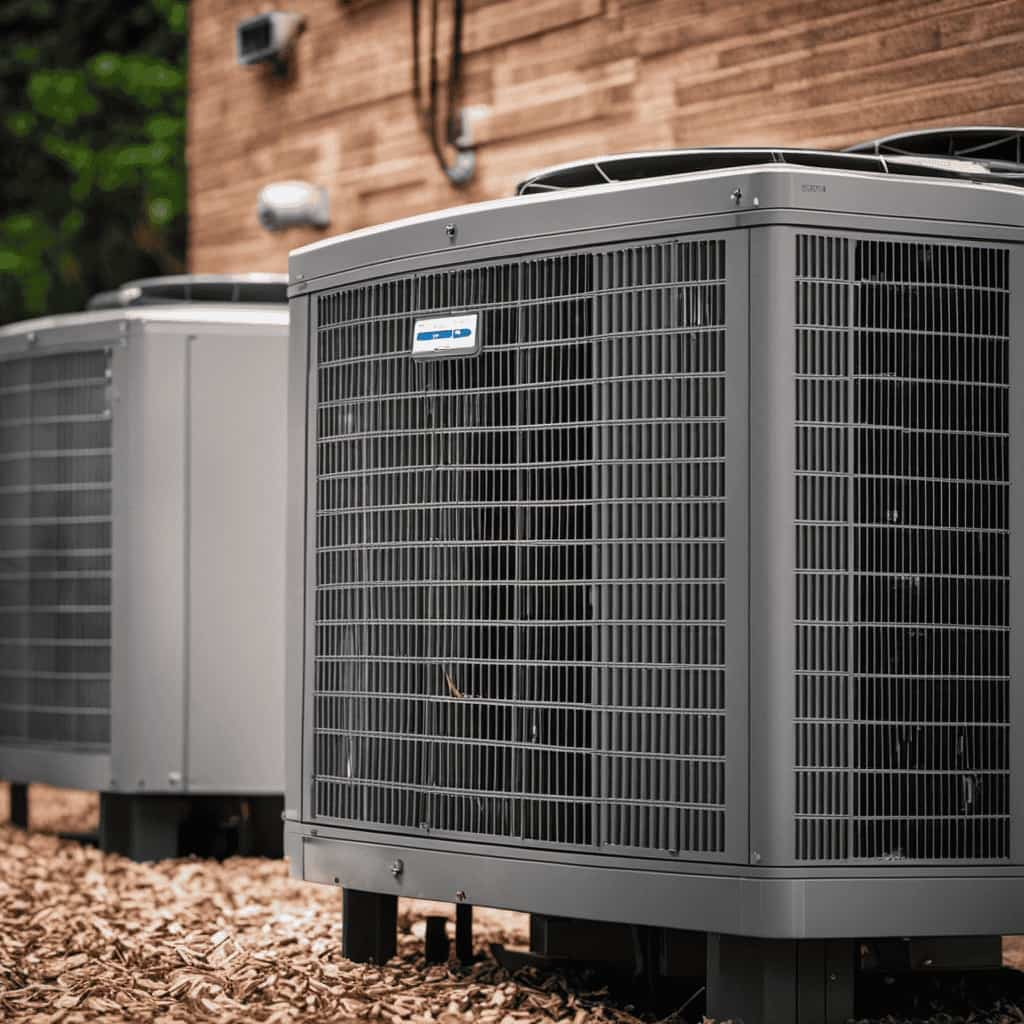
-
The payback period indicates the amount of time it takes for the energy savings to offset the initial cost of the upgrades.
-
This evaluation helps determine the financial feasibility of the investments and allows for better decision-making.
-
Maximizing ROI:
-
By comparing the initial cost of the upgrades to the energy savings over time, we can determine the ROI.

-
Maximizing ROI ensures that the upgrades provide the greatest financial return on investment.
Understanding the profitability of heat pump upgrades is crucial for making informed decisions. In the next section, we’ll explore real-life examples of successful heat pump upgrades through case studies.
Case Studies: Real-Life Examples of Successful Heat Pump Upgrades
Evaluating the cost savings and energy efficiency improvements achieved through heat pump upgrades, we present real-life case studies of successful implementations. These case studies serve as examples of how effective upgrades can significantly enhance energy efficiency and reduce costs.
In the first case study, a residential property in a cold climate saw a 30% reduction in energy consumption after upgrading to a high-efficiency heat pump. This resulted in annual savings of $500 on heating costs.
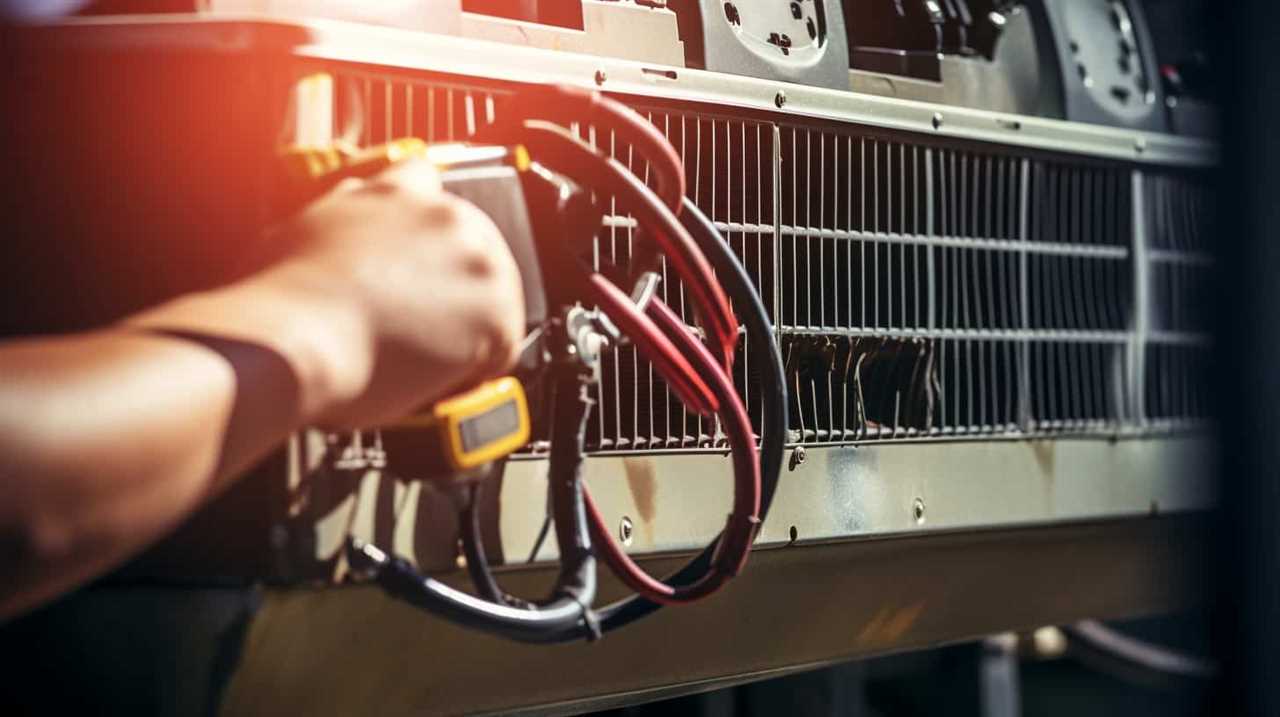
In the second case study, a commercial building in a warm climate experienced a 25% decrease in energy usage and saved $1,200 per year after replacing their outdated heat pump system with a new, more efficient model.
These real-life examples demonstrate the tangible benefits of investing in heat pump upgrades, both in terms of energy savings and financial returns.
Frequently Asked Questions
What Are the Common Types of Heat Pump Upgrades Available in the Market?
There are several common types of heat pump upgrades available in the market. Upgrading your heat pump can provide numerous benefits, such as increased energy efficiency and cost savings.
How Can I Calculate the Payback Period for a Heat Pump Upgrade?
Calculating the payback period for a heat pump upgrade involves conducting a financial analysis. By assessing the upfront costs, energy savings, and potential incentives, we can determine how long it will take to recoup the investment.
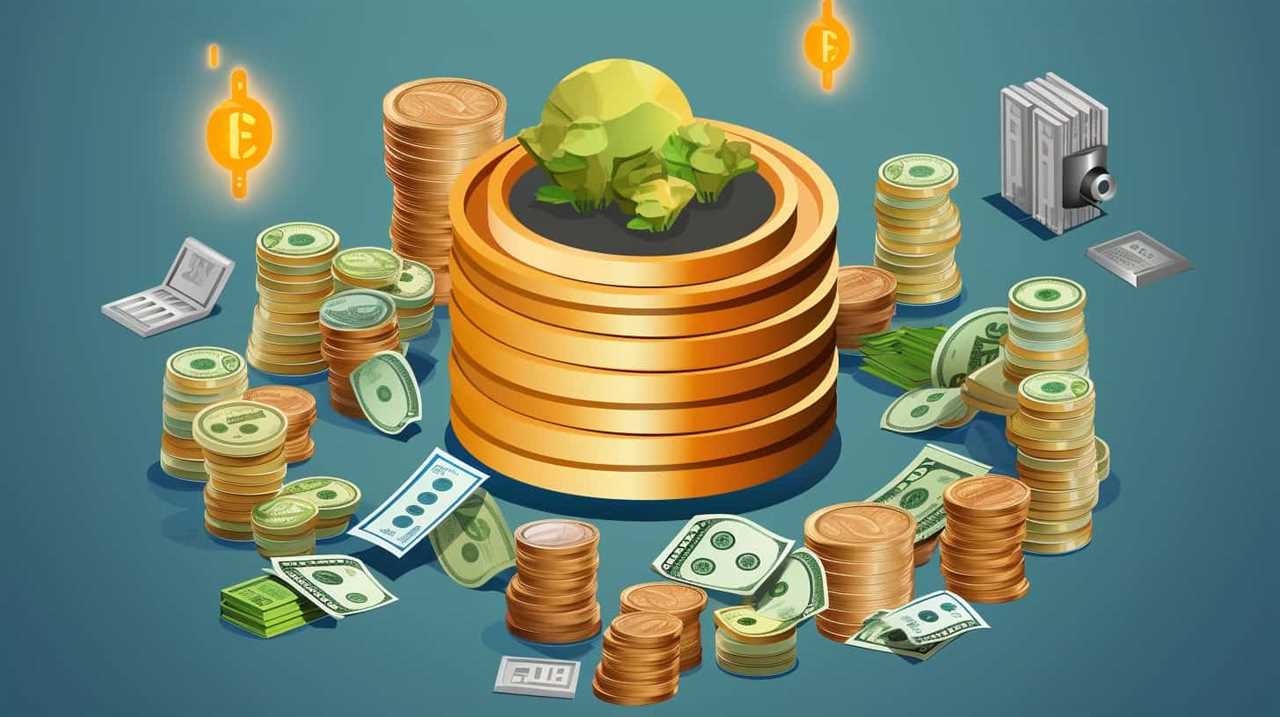
What Are the Factors That Can Impact the Energy Efficiency of a Heat Pump Upgrade?
Factors influencing energy efficiency in a heat pump upgrade include insulation, system size, and maintenance. Additionally, the impact of climate on heat pump efficiency should be considered, as extreme temperatures can affect performance and overall energy savings.
Are There Any Government Incentives or Rebates Available for Heat Pump Upgrades?
Government incentives and rebates are available for heat pump upgrades. We have analyzed the impact of these incentives in our study, comparing them with other energy efficient systems. These regulations, grants, and financial aids contribute to the profitability of heat pump upgrades.
Can a Heat Pump Upgrade Be Combined With Other Energy-Saving Measures to Maximize Efficiency and Cost Savings?
Combining a heat pump upgrade with other energy-saving measures can maximize efficiency and cost savings. However, it’s important to consider potential drawbacks and explore heat pump upgrade financing options to ensure the best outcome for innovation-minded individuals.
Conclusion
In conclusion, our analysis confirms that heat pump upgrades offer a promising pathway to enhance energy efficiency and profitability. By evaluating key indicators, conducting cost analysis, estimating energy savings potential, and assessing return on investment, we’ve demonstrated the financial viability of these upgrades.

Real-life case studies further support the success of heat pump upgrades. With their ability to evoke emotion and optimize energy usage, these upgrades are a wise investment for a sustainable future.



